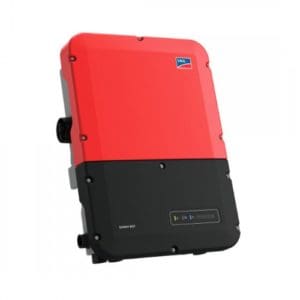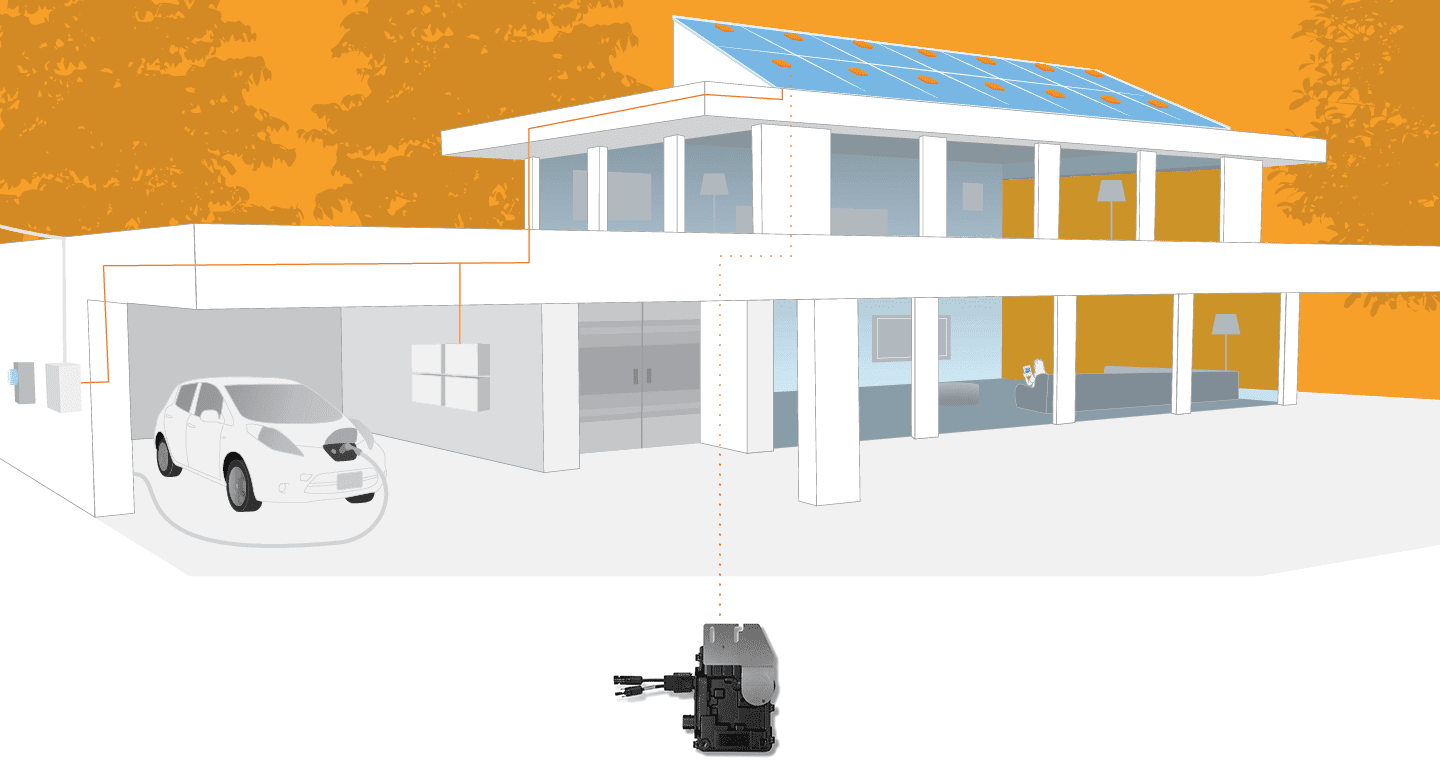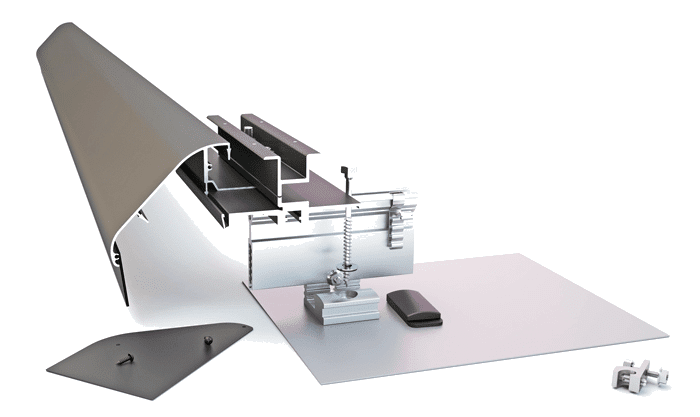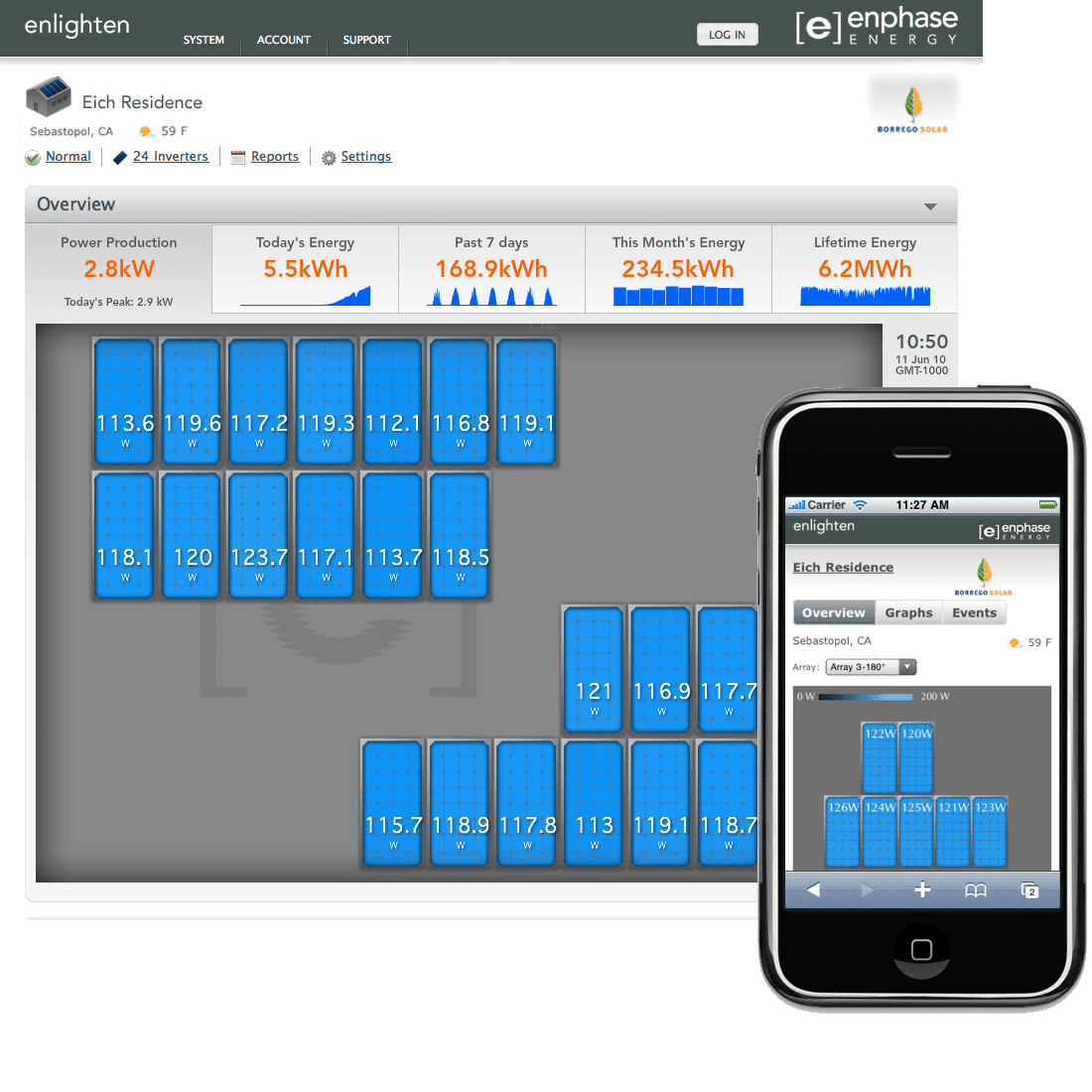The installation of a high-quality solar power system can reduce or eliminate dependence on the community power grid for electricity to light, heat, cool, and operate your home. The result is an inexpensive source of clean, renewable energy that will last for 25+ years. The major components of the solar power system include: Solar panels, inverters, the mounting system, the ANSI C-12 Meter that records your energy production so we can create SRECs, and the monitoring system that lets you know how well your system is functioning.
Residential Solar Panel Systems
The Solar panels themselves seem to be the primary focus of research when our client's start investigating solar. While the panels are the part of the system that most people talk about most, there are other components that are critical to the long-term reliability of the system.
These essential parts of your solar power system are:
-
- The solar panels that create the DC energy
- The inverter that makes the power useable in your home or business by converting it to AC
- The mounting system that connects your system to the roof and protects your house from leaks
- The ANSI C-12 Meter that records your energy production so we can create SRECs
- The monitoring system that lets you know how well your system is functioning
Then, once you've finished learning all about the solar equipment, spend some time reading about our workmanship warranty and post-installation services.
What Are The Best Solar Panels?
Our clients are faced with a wide variety of choices from the size of the panels (watts), to efficiency ratings, to the material they are made from (Monocrystalline, Polycrystalline or Thin Film), to their warranty, to where the solar panels are made. We currently only use Monocrystalline silicon panels for residential installations because of their even coloring and uniform appearance.
This high-purity silicon is made of single-crystal wafer cells cut from cylindrical crystal slabs. The deep blue color of the panels is because they are made from a single continuous ingot. While they cost more than other types of silicon, they are also the most efficient, producing more power per square foot than other types.
We work with each of our client's to determine the best solar panels for their application. Many factors impact this decision including: your current energy usage, the amount of energy you want from solar, the size of your roof, the angle and pitch of your roof, the amount of irradiation your roof receives from the Sun. your warranty preferences, and your budget.
Criteria to help determine the best solar panels
We look at the following criteria to help rank the solar panels that we supply:
-
- Efficiency
- Temperature coefficient
- Warranty
- Bankability
- Price
1. Solar Panel Efficiency
Solar panel efficiency refers to how well solar panels can convert sunlight into electricity. A higher efficiency rating is better, because it means that your solar panel is able to convert more of the sunlight it captures into electricity. For example, LG 365 watt panels are 20.8% efficient, Panasonic 330 watt panels are 19.71% efficient, and Trina 300 watt panels are 18.3% efficient.
2. Temperature Coefficient
The temperature coefficient tells you how well your solar panels will perform in less-than-ideal conditions. Solar panels operate most efficiently when they are kept cool (ideally around 25° C or 77° F).
The temperature coefficient gives you a sense of how your panel’s performance will degrade during hot summer days. For every degree above 25° C (or 77° F), your solar panel’s electricity production will decrease by the temperature coefficient. A lower temperature coefficient is better. Higher end LG and Panasonic panels have temperature ratings of around -.3% / ° C, while Trina Panels are in the -.39% / ° C range.
3. Solar Panel Warranty
There are three main types of warranties provided by the solar panel manufacturer. Fully understanding these warranties is critical for having a long-term, low-stress solar energy system for your home.
-
- Solar Panel Production Warranty. All of the panels that we install come with a 25 year production warranty guaranteeing that by the end of the term the solar panel will continue at a certain percent of original production.
- Solar Panel Workmanship Warranty. The workmanship warranty, also known as a materials or product warranty for the same panel is also important. The panels that we offer come with a 10, 12, 20 or 25 year workmanship warranty.
- Solar Panel Labor Warranty. The final warranty is a labor warranty. Panasonic and REC both cover labor for 25 years on their PV solar panels.
4. Solar Panel Manufacturer Bankability
Bankability simply means that multiple lenders have demonstrated significant confidence in the quality of these panels and in the manufacturers which produce them, and that they will be around to honor any warranties and guarantees. Some panel manufacturers such as LG and Hanwha have taken out insurance policies that guarantee their warranties will be honored even if the firm cannot.
We often hear the question "Are these solar panels Tier 1?" What people usually refer to is if they are on the Bloomberg Tier 1 List. Notably missing from the most current list is SunPower (due to continued financial concerns).
5. Solar Panel Price
It's important to remember that the cost of your solar panels typically represent between 18% and 30% of your fully installed solar system. That said, solar panel pricing can vary greatly between manufacturers. The chart below illustrates the % difference in the price per watt for JUST the solar panels. We uses Trina as the baseline price, and illustrate the percent difference in price per watt between panels.
What Are Inverters?
If not for inverters, solar panels would be relatively useless for homeowners. Once the solar panels have collected sunlight and changed it into DC (direct current) power, an inverter is needed to convert that electricity into AC (alternating current) power for use in your home. There are three types of residential inverters on the market today. Central (or string inverters), Central (or string inverters) with Power Optimizers and Micro Inverters.
Central (or string) Inverters

Solar panels are connected in series to form a string. The string connects to one large inverter where the DC power is converted to AC power. There are many drawbacks to this inexpensive (and outdated) technology. Shading of one panel brings the output of all the panels down, we can’t tell the performance of individual panels, only the system as a whole, Solar panels must be lined up in the same orientation to the sun to produce similar current, and if the one inverter breaks, the whole solar system shuts down. Central Inverters typically come with a 10 or 12 year warranty. Enough said. We don't use standard Central Inverters.
Central (or string) Inverters with Optimizers
Priced slightly higher than Central inverters, this technology is used with a central inverter, power optimizers are attached to each panel in the array. They condition the DC power at the panel level before it moves on to the inverters and the power output is individual to the panel so shading or other problems with one panel don’t bring down the whole system. Solar panels do not need to be lined up in the same orientation to the sun to produce similar current, and power optimizers allow for individual monitoring of each panel. SolarEdge Inverters with Optimizers include a standard 12 year warranty on the Inverter (upgradable to 20 or 25 years) and 25 years on the Optimizers. We like these!
Micro Inverters

Each solar panel has its own small inverter attached to its backside. The DC power is converted to AC power at the panel level so they can be oriented differently without impacting the system. Panel outputs are independent of one another, so shading on one panel does not impact output of the others. Individual monitoring of each panel allows for easy identification of where a problem is. Enphase markets the concept of redundancy - if one micro inverter breaks, the other solar panels can continue to produce power. However, the combiner box (where all of the branch circuit line come in from the roof) is a single point of failure and only comes with a five-year limited warranty.
EnPhase Micro Inverters boast about a 25 year replacement warranty - But, it does NOT include the cost of labor related to (1) un-installing Covered Product; (2) re-installing a repaired or replacement product, or (3) the removal, installation or troubleshooting of the Covered Owner's electrical systems.

Mounting systems are probably the least discussed and most important part of the PV solar system. No matter the weather, your solar panels need to stay solidly on your roof (and the penetrations need to keep from leaking) . That’s where the solar panel mounting system comes in. Rooftop installation costs can vary quite a bit based on the type of mounting system used. Most of our competitors use rails that are attached to the roof. Then the panels are attached to the rails. We use rail-less systems because we find to be more aesthetically pleasing, reliable and they offer better electrical bonding solutions. The equipment we use will not invalidate your roof warranty. However, other mounting systems and installation methods may invalidate your roof warranty. We offer Snap-N-Rack and Unicac rail reail free mounting systems (both come with a 25-year warranty).
It's our opinion to invest in solar mounting systems that use state of the art technology to make roof-mounted solar panel systems stronger, more reliable, and 100% waterproof.
Take a moment to watch this video showing "typical" inexpensive flashing -vs- the elevated water seal technology that we install to prevent solar panels systems from leaking.

Metering. In accordance with New Jersey's Clean Energy Program, All solar energy systems eligible to earn SRECs must report system production based upon readings from a revenue-grade meter that meets the American National Standards Institute (ANSI) Standard C12.1-2008. This meter is in addition to the electric meter installed by the local utility to measure the home or business’ electric consumption. There are many types of metering devices available including digital meters, digital meters with wi-fi or cellular connections, and integrated meters. All of our SolarBase™ programs included integrated meters with cellular connectivity.
Monitoring. Remotely monitoring systems help us to measure and track how much electricity your system is producing, and identify and promptly fix any performance issues so that you are maximizing the production of electricity from your solar system. All of our SolarBase™ programs include panel level monitoring as part of our service.
Our Solar Packages
All our solar panel systems feature aesthetically designed, engineered, and installed Tier-1 products. However, our SolarBase™ program goes beyond a standard solar installation—it's a comprehensive, long-term energy management program crafted to optimize energy production and financial returns. Every SolarBase™ Program comes with:
-
- Fleet Managed Remote Solar System Monitoring
- Maintenance & Support
- Money Back Solar Energy Production Guarantee
To help simplify all of the equipment and warranty choices, we've put together three PV Solar Packages for our clients to choose from.
Our Premium Package
Experience our premium SolarBase program, showcasing cutting-edge panels from Hanwha, Panasonic, REC, and Trina. Benefit from SolarEdge EnergyHub Inverters, upgraded to a 25-year warranty, along with Power Optimizers. The package includes a Snap-N-Rack rail-free mounting system, whole house surge protector, and critter guard. Moreover, enjoy the assurance of an industry-leading 25-year installation workmanship warranty.
Our Value Package
For our more value minded client's, we created our Value Line. his option also incorporates panels from Hanwha, Panasonic, REC, and Trina; coupled with SolarEdge Inverters (upgraded to a 25-year warranty) featuring Power Optimizers. The package is complemented by the Snap-N-Rack rail-free mounting system, offering a cost-effective yet quality solution. Plus, enjoy the confidence of a 15-year installation workmanship warranty.
Our Economy Package
For our more budget minded client's, we created our Economy Line. This option also features panels from Hanwha, Panasonic, REC, and Trina; combined with SolarEdge Inverters (standard 12-year warranty) equipped with Power Optimizers. The package includes the Snap-N-Rack rail-free mounting system, providing a cost-effective solution without compromising quality. Plus, benefit from a 10-year installation workmanship warranty for added peace of mind.



